Geomorphica's Team
Steering Committee
Roberto Fernández – he/él

Roberto is an Assistant Professor in the Civil and Environmental Engineering Department at Penn State University. His research focuses on the ways in which flowing water interacts with the built environment and the landscapes around us. My preferred research methods are observation and experimentation. If I were to describe my research with a single word, it would be erosion. Erosion is nature’s most successful artist. It sculpts a full range of landscapes, at many scales, often creating repeating patterns, such as meandering channels or bedforms (e.g. ripples and dunes). These interactions between water and the boundaries that contain it, via erosive processes, are my main research interest.
“I want to remove barriers in the publishing landscape and make sure colleagues across the world have the opportunity to publish and access research for free.”
Alice Lefebvre – she/her

Alice is a scientist at MARUM – University of Bremen, Germany. A trained geologist and oceanographer, she is now mostly interested in the geomorphology of shallow and deep water environments specifically on the interaction between bed morphology, hydrodynamics and sediment transport, with a focus on bedforms. At Geomorphica, Alice is part of the steering committee, helping to develop the journal, and as Editor-in-Chief, she oversees the whole publication process.
“I want to build a respectful and inclusive publishing environment”
Matthieu Giaime – he/him

Matthieu is a geomorphologist and geoarchaeologist interested in the spatio-temporal evolution of coastlines in order to assess the role of climatic impacts and human activities in the evolution of socio-ecosystems during the Holocene. He is Maître de conférences (Associate professor) at the Department of Geography, Université Paul-Valéry - Montpellier 3 (France), affiliated with “Archéologie des Sociétés Méditerranéennes” CNRS laboratory and a Research Fellow of the Recanati Institute for Maritime Studies at the University of Haifa (Israel). Through a constant dialogue between approaches originating from physical and human geography, archaeology and history, he aims at studying the morphosedimentary response of coastal areas and deltas to climate forcings, human impacts and relative sea-level changes in particular at harbour settlements. At Geomorphica, Matthieu is Associate Editor and part of the steering committee as head of the Ethics team.
“I believe our duty is to develop an inclusive, diverse and fair publishing environment.”
Melanie Stammler – she/her

Melanie Stamler is a PhD student at Bonn University, Germany. Her focus lies on high mountain landscapes and (peri)glacial processes in particular. Currently she is working on deciphering the spatiotemporal variability of interannual and seasonal surface changes in the permafrost environment of a high-alpine catchment in the Argentinean Andes. She combines fieldwork, photogrammetry and remote sensing analysis for surface change detection and puts emphasis on the need to study glacier-permafrost interactions to fully understand the hydrological significance of the landscape. At Geomorphica, Melanie is part of the steering committee as chair of the communications commission.
“I want to be part of a scientific world where scientific publishing holds true to the values of accessibility and transparency and is independent of an author's gender, origin, place of employment and access to funding.”
Larry Syu-Heng Lai – he/him

Larry is currently a postdoctoral scholar at the University of Washington, USA. He is a field sedimentologist and geomorphologist by training, studying surface processes and related natural controls that drive sediment production & transport, development of sedimentary basins, and landscape evolution in tectonically active regions.
“I am a steadfast advocate for the diamond open access publishing model, deeply committed to fostering an inclusive publishing environment that paves a freeway for the accessibility of scientific knowledge and resources.”
Past members
(2021-2023) Guillaume Goodwin – he/him

Guillaume is a hydraulics and geomorphology scientist at FishPass, a small consultancy specialised in ecological continuity in rivers. His main interests are the evolution of fluvial and coastal wetlands, assessed through models and aerial topography. He also works on flood mitigation projects through wetland restoration. Guillaume has recently moved from academia to the private sector and aims to promote mutual transparency between research and its operational implementation. At Geomorphica he chairs the Web commission.
“Open science should be a two-way street, and I am excited to be part of a project that will broaden both reading and publishing horizons.”
(2021-2023) Rai Bosch – all pronouns welcome

Rai is a Geologist III at AECOM Technical Services, Inc. where they primarily work in environmental remediation consulting for karstic sites. Their PhD research at the University of Cincinnati focused on landscape evolution of karst landscapes. They are fascinated by the processes that are at play during the transition between fluvial- and karst-dominated drainage. At Geomorphica, Rai has been part of the steering committee and chair of the Inclusivity Commission between 2021 and 2023 and they are now Associate Editor.
“I envision Geomorphica as one facet of a growing science communication landscape in which all people are free to research, publish, and read, without barriers.”
Editor-in-Chief
Alice Lefebvre – she/her
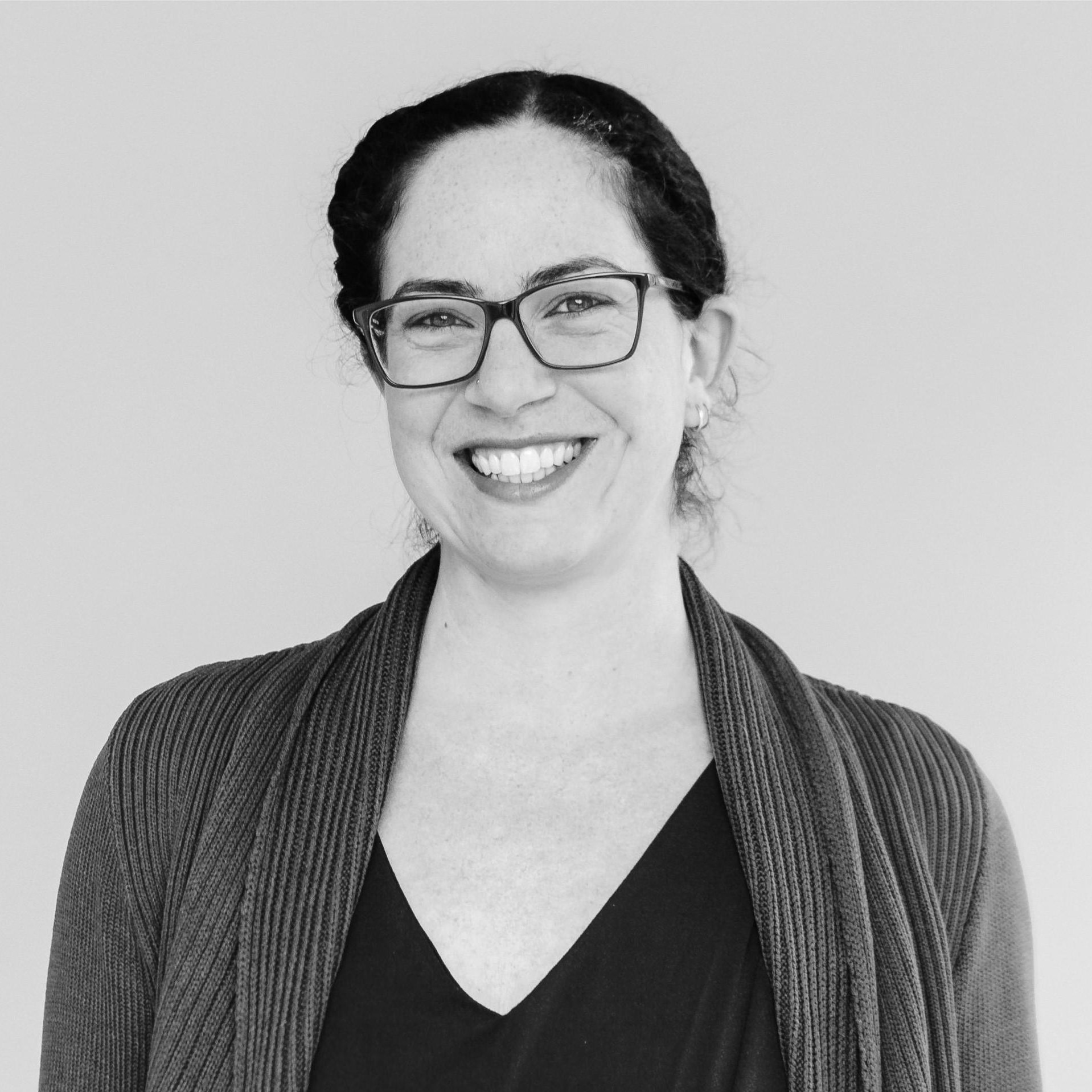
Alice is a scientist at MARUM – University of Bremen, Germany. A trained geologist and oceanographer, she is now mostly interested in the geomorphology of shallow and deep water environments specifically on the interaction between bed morphology, hydrodynamics and sediment transport, with a focus on bedforms. At Geomorphica, Alice is part of the steering committee, helping to develop the journal, and as Editor-in-Chief, she oversees the whole publication process.
“I want to build a respectful and inclusive publishing environment”
Associate Editors
Jigjidsurengiin Batbaatar – he/him

Batbaatar is a geologist interested in the landscapes of cold environments. He is particularly interested in the evolution of glacial landscapes in alpine settings, sensitivity of glaciers to changes in past climates, distribution and variation of permafrost, history of megafloods, and application of Earth analogs to planetary geology. He uses field campaigns to collect data complemented by remote sensing and laboratory analyses.
“Science is never neutral. Your voice is valuable and must be heard. I want to help you bring your best science in an equitable and inclusive environment.”
Rai Bosch – all pronouns welcome

Rai is a Geologist III at AECOM Technical Services, Inc. where they primarily work in environmental remediation consulting for karstic sites. Their PhD research at the University of Cincinnati focused on landscape evolution of karst landscapes. They are fascinated by the processes that are at play during the transition between fluvial- and karst-dominated drainage.
“I envision Geomorphica as one facet of a growing science communication landscape in which all people are free to research, publish, and read, without barriers.”
Driss Chahid – he/him

Driss Chahid is a geologist and geomorphologist, interested in the study of quaternary formations. He is Maître de conférences (Associate professor) at Higher Normal School, University Cady Ayyad (Marrakech, Morocco). Currently, he is doing investigations in the field of the sedimentary record of sea-level variations in coastal area, in order to understand the paleoenvironments evolution. He also started working in desertic regions. This context enables him to see the morphosedimentary response of landscapes under Holocene climatic changes and geodynamic conditions. Either in coastal or continental regions, the evolution of landscapes and climatic changes have been recorded in the form of sedimentary deposits but also in a variety of morphologies. Hence the usefulness of its multi-disciplinary approach based on morphostratigraphy, sedimentological analysis and geochronology.
“I believe that scientific knowledge cannot be built without the values of exchange and sharing”
Shawn Chartrand – he/him

Shawn is an assistant professor at Simon Fraser University -School of Environmental Science, Canada. He is a geophysical and environmental scientist. His research focuses on how rivers form and co-evolve with landscapes. He has particular interest in mountain rivers and cold regions of the Arctic. Shawn uses field campaigns, physical experiments and theory development to address basic research questions. He applies his research to improve how professional scientists approach and develop river restoration plans, including the removal of dams.
“I want to foster an open scientific publishing environment in which authors and reviewers do their best work possible, providing for a respectful, constructive and growth-oriented process.”
Jaclyn Cockburn – she/her

Jackie is a Geographer and is driven by curiosity and things that move - especially sediment and water in streams. She joined the Department of Geography, Environment & Geomatics at the University of Guelph, Canada in July 2011. Jackie’s work focuses on hydrodynamics in small channels where the paradox between the need for morphological diversity and risk-adverse stream restorations and designs is often played out.
“I am excited about learning, and am grateful to have that opportunity to share this with others. In particular creating and expanding access to high-quality research in Geomorphology.”
Serina Diniega – she/her

Serina is a planetary scientist at JPL studying present-day surface-atmosphere activity on Mars, such as gullies and dune formation, and the planetary environment and physical processes that drive such activity. Her aim is to improve interpretation of observable landforms and changes so as to gain a detailed understanding of planetary environments and physical processes. In addition to science research, Serina is heavily involved with mission development, with current responsibilities as an Investigation Scientist on the Europa Clipper Mission and as a science lead in very early development of Mars small spacecraft mission concepts. Beyond her research and mission development work, Dr. Diniega prioritizes encouraging students -- including women and those with minoritized identities -- and the general public in STEM studies. She has advised over 30 students (K-12, undergraduate, and graduate) in math, geology, and planetary science topics and research projects, including 3 undergraduate theses. In all areas, Dr. Diniega seeks to increase inclusivity in scientific practices and thus enable diverse contributions within the science community.
Olutoyin Fashae – she/her

Olutoyin Fashae is an Associate Professor of Geography at the Department of Geography, University of Ibadan, Nigeria. Her interests cut across geomorphic forms and processes in particular, how understanding these processes contributes to the environmental sustainability of water and land resources. She demonstrates these by conducting research focusing on man–environment interaction, wetlands, rivers, riparian vegetation, river health and restoration.
“I am so passionate about promoting well-inclusive publication insights for upcoming Geomorphologists”
Roberto Fernández – he/él

Roberto is an Assistant Professor in the Civil and Environmental Engineering Department at Penn State University. His research focuses on the ways in which flowing water interacts with the built environment and the landscapes around us. My preferred research methods are observation and experimentation. If I were to describe my research with a single word, it would be erosion. Erosion is nature’s most successful artist. It sculpts a full range of landscapes, at many scales, often creating repeating patterns, such as meandering channels or bedforms (e.g. ripples and dunes). These interactions between water and the boundaries that contain it, via erosive processes, are my main research interest.
“I want to remove barriers in the publishing landscape and make sure colleagues across the world have the opportunity to publish and access research for free.”
Rocío Luz Fernández – she/her
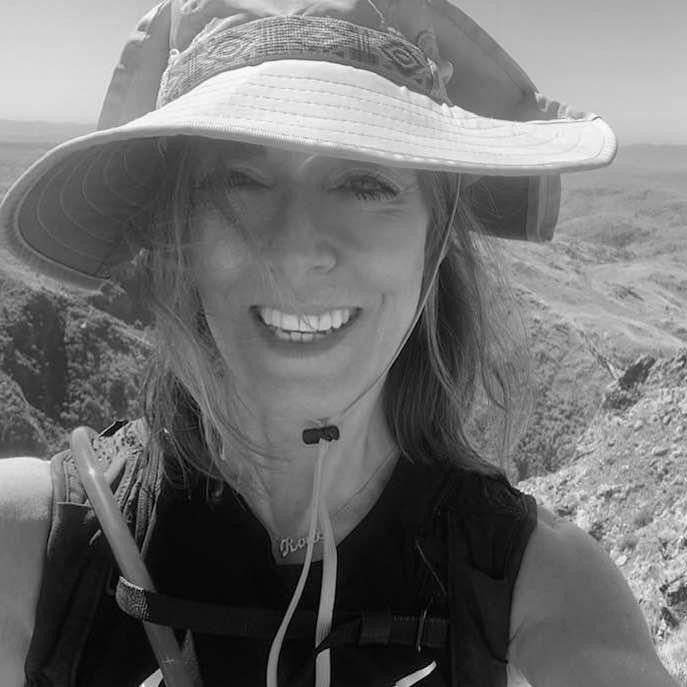
Rocio is a researcher at The National Scientific and Technical Research Council in Argentina. Her expertise focuses on sediment transport and morphodynamics of rivers, with a particular interest in understanding the interface between hydrology, geomorphology and vegetation. As a trained consultant she is also interested in monitoring and assessing lakes and reservoirs. Her work is based on laboratory and numerical modelling, field investigation and analysis of satellite imagery.
“I am thrilled to collaborate with the vision of barrier‐free access to participation in science, as this is vital to our scientific community’s inclusivity.”
Matthieu Giaime – he/him
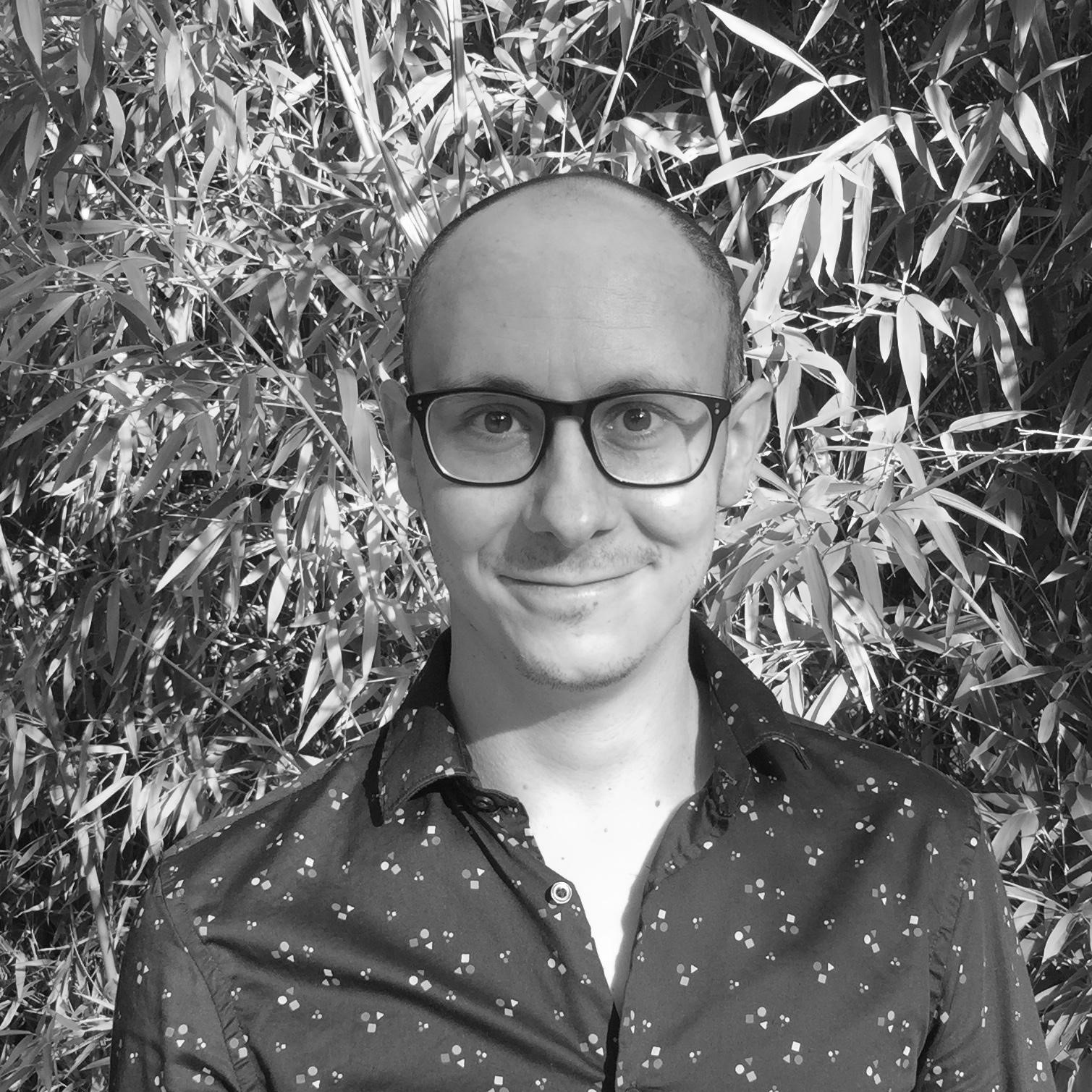
Matthieu is a geomorphologist and geoarchaeologist interested in the spatio-temporal evolution of coastlines in order to assess the role of climatic impacts and human activities in the evolution of socio-ecosystems during the Holocene. He is Maître de conférences (Associate professor) at the Department of Geography, Université Paul-Valéry - Montpellier 3 (France), affiliated with “Archéologie des Sociétés Méditerranéennes” CNRS laboratory and a Research Fellow of the Recanati Institute for Maritime Studies at the University of Haifa (Israel). Through a constant dialogue between approaches originating from physical and human geography, archaeology and history, he aims at studying the morphosedimentary response of coastal areas and deltas to climate forcings, human impacts and relative sea-level changes in particular at harbour settlements. At Geomorphica, Matthieu is Associate Editor and part of the steering committee as head of the Ethics team.
“I believe our duty is to develop an inclusive, diverse and fair publishing environment.”
Pilar Jeanneret – she/her

Pilar is an Assistant Researcher in the Institute of Nivology, Glaciology and Environmental Sciences (IANIGLA) at the Scientific and Technological Center in Mendoza, Argentina. During her PhD in the University of Buenos Aires, she specialised in glacial geomorphology and mass removal processes in high mountain environments, such as the Arid Andes of Argentina. Her research focused on the geomorphological evolution of the mountain basins, while implementing several numerical dating techniques such as, cosmogenic radionuclides, luminescence and radiocarbon dating, as well as paleoclimatic proxies. Currently, she is working on bringing some of these dating techniques to Argentina by installing a laboratory facility in Mendoza, which will make them more affordable for southamerican countries.
“I believe in an inclusive approach for scientific knowledge, where anyone can access high quality research regardless of their funding and country of origin.”
Yakup Nayazi – he/him

Yakup is a research fellow marine geoscientist in the Minderoo-UWA Deep-Sea Research Centre, at the University of Western Australia. He had worked on submarine/seismic geomorphology of submarine canyon/channels, mass-transport complexes, fluid flow, and igneous plumbing systems in the ocean sphere. He explores, maps, and interprets the seafloor using acoustic imaging techniques and using geomorphological, geological, and geophysical knowledge to understand the regional and global context of the seafloor physiography and its influence on the oceanographic and ecologic conditions. At Geormorphica, Yakup is part of the Editorial Commission, as an Associate Editor.
“I want to promote a fair publication atmosphere and increase the accessibility of science to the broader public.”
Fabiano Pupim – he/him

Fabiano is a professor at the Federal University of São Paulo (Unifesp), Brazil. His research interest is in the evolution of fluvial systems and their relation with climate, tectonic, and implications for biota diversification, with experience in the largest South American rivers and wetlands (i.e., Amazon, Orinoco, Paraná, Pantanal, Tocantins, and São Francisco). He uses remote sensing, luminescence, and cosmogenic nuclide methods. At Geormorphica, Fabiano is part of the Editorial Commission as an Associate Editor.
“I want to promote an inclusive, collaborative, and free way to publish new insights in Geomorphology”
Rodrigo L. Soteres – he/him

Rodrigo is an early career geomorphologist based at the Universidad de Magallanes in the Chilean Patagonia. He is interested in glaciers as mountain landscapes builders and as present-to-past climate change recorders. To this end, he studies the geomorphological imprint of the cryosphere following an approach that includes surface mapping, sedimentological and stratigraphic analysis, geochronology and numerical modelling. At Geomorphica, Rodrigo serves as Associate Editor.
“I truly believe that science is an universal endeavour and, as such, it should be accessible for everyone”
Managing Editors
Larry Syu-Heng Lai – he/him

Larry is currently a postdoctoral scholar at the University of Washington, USA. He is a field sedimentologist and geomorphologist by training, studying surface processes and related natural controls that drive sediment production & transport, development of sedimentary basins, and landscape evolution in tectonically active regions.
“I am a steadfast advocate for the diamond open access publishing model, deeply committed to fostering an inclusive publishing environment that paves a freeway for the accessibility of scientific knowledge and resources.”
Helen Dias – she/her
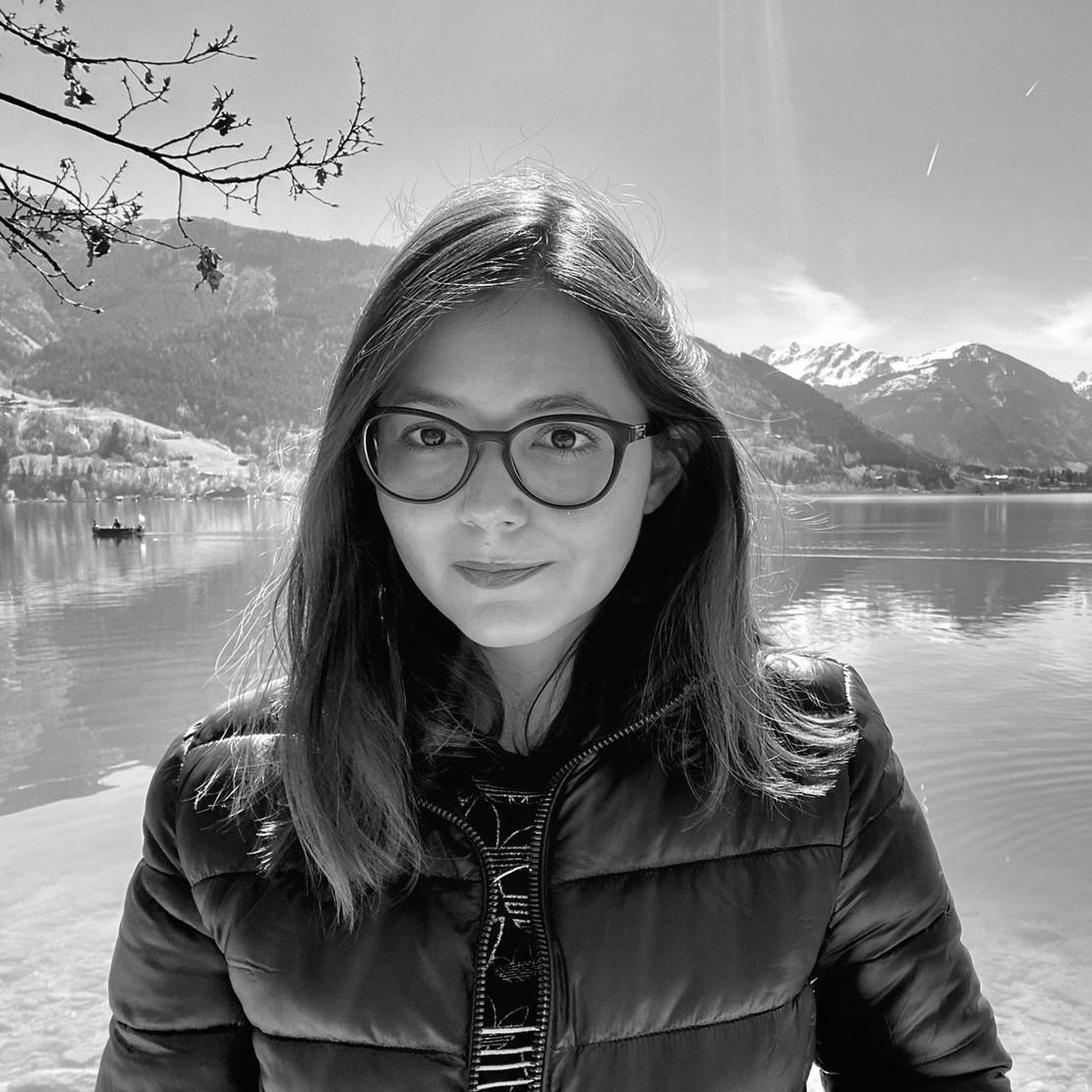
Helen is a Geographer and currently a Ph.D. candidate at the University of São Paulo (Brazil). Her main research interests are mass movements, remote sensing, and statistical analysis. Her undergoing project is focused on landslide recognition and mapping, object and pixel-based algorithms for inventory construction, and susceptibility assessment. At Geormorphica, Helen is part of the Editorial Commission, as a Managing Editor.
“I want to play a role in an inclusive and equal gender environment opened to new cultures and experiences”
Nate Klema – he/him

Nate is a professor in the Physics and Engineering department at Fort Lewis College, USA. He is primarily interested in the geomorphology of volcanic landscapes and interactions between magma and meteoric water that drive the development of volcanic mountain terrains. His work focuses on combining methods from tectonic geomorphology with analysis of diverse geophysical datasets and formal surface theory to better understand the superposition of temporal and spatial scales represented in modern topographic features. At Geormorphica, Nate is part of the Editorial Commission, as a Managing Editor.
“I believe strongly in scientific knowledge as a shared resource and am excited to be part of this effort to present cutting edge geomorphology research in a format that is accessible to everyone.”
Melanie Stammler – she/her

Melanie Stamler is a PhD student at Bonn University, Germany. Her focus lies on high mountain landscapes and (peri)glacial processes in particular. Currently she is working on deciphering the spatiotemporal variability of interannual and seasonal surface changes in the permafrost environment of a high-alpine catchment in the Argentinean Andes. She combines fieldwork, photogrammetry and remote sensing analysis for surface change detection and puts emphasis on the need to study glacier-permafrost interactions to fully understand the hydrological significance of the landscape. At Geomorphica, Melanie is part of the steering committee as chair of the communications commission.
“I want to be part of a scientific world where scientific publishing holds true to the values of accessibility and transparency and is independent of an author's gender, origin, place of employment and access to funding.”
Anatolii Tsyplenkov – he/him

Anatolii is a Scientist-Geomorphologist at Manaaki Whenua – Landcare Research, a New Zealand Crown Research Institute. His work implements novel sediment process measurements, formalized with data-driven models, to elucidate the development of landscapes.
“I believe that science should be a force for good, and that by making research more accessible, transparent, and reproducible, we can create a better world for all. That's why I volunteer at Geomorphica, to develop a publishing model focused on serving the scientific community over publishing companies' profits.”
Xun Yang – she/her

Xun is currently a last year PhD student at Freie Universität Berlin (Germany). Her major interests are the fluvial-alluvial depositional processes and the palaeolithic/neolithic to historical human-environment interactions by geomorphological and sedimentary analyses as well as soil erosion modelling. She joined two projects in the Mediterranean region. At Geomorphica, Xun is willing to support the editorial process.
“I believe that on one day, all knowledge should be freely published and accessed by everyone, particularly in the disciplines of geomorphology.”
Equity, Diversity and Inclusion Team
Roberto Fernández – he/él

Roberto is an Assistant Professor in the Civil and Environmental Engineering Department at Penn State University. His research focuses on the ways in which flowing water interacts with the built environment and the landscapes around us. My preferred research methods are observation and experimentation. If I were to describe my research with a single word, it would be erosion. Erosion is nature’s most successful artist. It sculpts a full range of landscapes, at many scales, often creating repeating patterns, such as meandering channels or bedforms (e.g. ripples and dunes). These interactions between water and the boundaries that contain it, via erosive processes, are my main research interest.
“I want to remove barriers in the publishing landscape and make sure colleagues across the world have the opportunity to publish and access research for free.”
Sarah Benetti – she/her

Sara is a marine geoscientist, with an interest in sedimentary processes and geomorphology. She has over 20 years of experience in marine research across the oceans, from the Arctic to Antarctica, with more recently a focus on the reconstruction of the extent and dynamics of the British-Irish Ice Sheet. She works extensively with datasets obtained from marine coring and drilling, multibeam echo-sounder bathymetry, backscatter and sub-bottom data. She has always been keen to change things that don’t work in this world and her contribution to Geomorphica is to support such change in academic publishing.
“I want to be part of a scientific world where scientific publishing holds true to the values of accessibility and transparency and is independent of an author's gender, origin, place of employment and access to funding.”
Serina Diniega – she/her

Serina is a planetary scientist at JPL studying present-day surface-atmosphere activity on Mars, such as gullies and dune formation, and the planetary environment and physical processes that drive such activity. Her aim is to improve interpretation of observable landforms and changes so as to gain a detailed understanding of planetary environments and physical processes. In addition to science research, Serina is heavily involved with mission development, with current responsibilities as an Investigation Scientist on the Europa Clipper Mission and as a science lead in very early development of Mars small spacecraft mission concepts. Beyond her research and mission development work, Dr. Diniega prioritizes encouraging students -- including women and those with minoritized identities -- and the general public in STEM studies. She has advised over 30 students (K-12, undergraduate, and graduate) in math, geology, and planetary science topics and research projects, including 3 undergraduate theses. In all areas, Dr. Diniega seeks to increase inclusivity in scientific practices and thus enable diverse contributions within the science community.
Kausik Ghosh – he/him
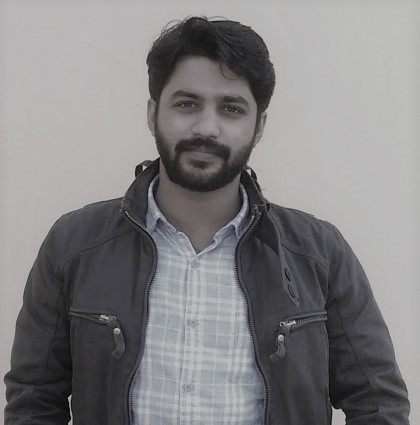
Kausik is an Assistant Professor in Geography at Vidyasagar University, India. He leads the Geo-bridge research lab, which focuses on the interdisciplinary studies encompassing fluvial geomorphology, sedimentology, the effects of anthropogenic interventions such as dam and barrage operations and the impact of climate change on river basins, water governance, and tensions related to water-sharing in transboundary Himalayan rivers. Additionally, his research and teaching involve ecosystem services and the intricate nexus between water, energy, and food security.
Freely accessible and widely available documented knowledge through publications is a steppingstone to foster viable research opportunities for individuals across diverse geographies.
Alice Lefebvre – she/her

Alice is a scientist at MARUM – University of Bremen, Germany. A trained geologist and oceanographer, she is now mostly interested in the geomorphology of shallow and deep water environments specifically on the interaction between bed morphology, hydrodynamics and sediment transport, with a focus on bedforms. At Geomorphica, Alice is part of the steering committee, helping to develop the journal, and as Editor-in-Chief, she oversees the whole publication process.
“I want to build a respectful and inclusive publishing environment”
Communication Team
Melanie Stammler – she/her

Melanie Stamler is a PhD student at Bonn University, Germany. Her focus lies on high mountain landscapes and (peri)glacial processes in particular. Currently she is working on deciphering the spatiotemporal variability of interannual and seasonal surface changes in the permafrost environment of a high-alpine catchment in the Argentinean Andes. She combines fieldwork, photogrammetry and remote sensing analysis for surface change detection and puts emphasis on the need to study glacier-permafrost interactions to fully understand the hydrological significance of the landscape. At Geomorphica, Melanie is part of the steering committee as chair of the communications commission.
“I want to be part of a scientific world where scientific publishing holds true to the values of accessibility and transparency and is independent of an author's gender, origin, place of employment and access to funding.”
Katy Burrows – she/her

Katy is a postdoctoral researcher at the European Space Agency (ESA-ESRIN) in Italy. She uses satellite remote sensing and numerical modelling to study triggered landslides across large spatial scales in order to understand the impacts of storms and earthquakes on mountain landscapes. At Geomorphica, Katy is part of the communications commission.
“I am excited to work on a project that will remove barriers to both publishing and reading the great research that is carried out in our community.”
Bastian Grimm – he/him

Bastian Grimm is a PhD student at Gießen University, Germany. His focus lies on fluvial geomorphology as well as quaternary geology mixed with sedimentology and geochronology. Currently he is working on the human-dominated floodplain transformation and the change in boundary conditions responsible for the morphological change of the Wiesent River and its tributaries in the Northern Franconian Alb (Germany) since the Middle Ages to Early Modern times. He combines DEM analyses, percussion drilling and trenching, sedimentological, paleoecological and stratigraphical analyses, and OSL dating to investigate the (chrono)stratigraphical floodplain evolution. At Geomorphica, Bastian is part of the communications commission.
“Science should be freely accessible to everyone – it should not be dependent on politics or big publishers. Because if science is no longer free, then only a small, privileged group of people will be able to do science. I’m at Geomorphica because I want to be part of a science community that makes science accessible to everyone and evaluates the quality of an article regardless of an author’s gender, origin, place of employment and social conditions.”
Sjoukje de Lange - she/her

Sjoukje is a PhD student at Wageningen University (Netherlands). She studies hydraulic roughness from bedforms in mixed sediments in estuaries, based on field studies, lab studies and computer modelling. Sjoukje has a broad interest in geomorphology, and especially the interaction between water and moving (sediment) particles. At Geomorphica, Sjoukje is part of the Communications Commission.
Tech Team
We are looking for volunteers!
Ethics Team
Matthieu Giaime – he/him

Matthieu is a geomorphologist and geoarchaeologist interested in the spatio-temporal evolution of coastlines in order to assess the role of climatic impacts and human activities in the evolution of socio-ecosystems during the Holocene. He is Maître de conférences (Associate professor) at the Department of Geography, Université Paul-Valéry - Montpellier 3 (France), affiliated with “Archéologie des Sociétés Méditerranéennes” CNRS laboratory and a Research Fellow of the Recanati Institute for Maritime Studies at the University of Haifa (Israel). Through a constant dialogue between approaches originating from physical and human geography, archaeology and history, he aims at studying the morphosedimentary response of coastal areas and deltas to climate forcings, human impacts and relative sea-level changes in particular at harbour settlements. At Geomorphica, Matthieu is Associate Editor and part of the steering committee as head of the Ethics team.
“I believe our duty is to develop an inclusive, diverse and fair publishing environment.”
Andrea Zerboni – he/him

Andrea is Professor of Geomorphology and Geoarchaeology at the Dipartimento di Scienze della Terra “A. Desio” of the University of Milano (Italy). As a geoarchaeologist and geomorphologist, he carried out research projects in Mediterranean and continental Europe, the Sahara Desert, East Africa, the Levant, the Arabian Peninsula, and Antarctica. His research aimed at reconstructing the effects of past climate changes on surface processes and the complexity and nonlinearity of the late Quaternary climate-environment-human nexus. he is also interested in detecting when human agency started leaving permanent changes on Earth’s processes as preserved in the geological record. In Geomorphica, Andrea supported the organisation of the journal and is willing to mentor the team thanks to his experience in the editorial process.
“I am delighted to support an international project for Open Science in the field of Geomorphology”
Mentors and collaborators
Sara Benetti – she/her

Sara is a marine geoscientist, with an interest in sedimentary processes and geomorphology. She has over 20 years of experience in marine research across the oceans, from the Arctic to Antarctica, with more recently a focus on the reconstruction of the extent and dynamics of the British-Irish Ice Sheet. She works extensively with datasets obtained from marine coring and drilling, multibeam echo-sounder bathymetry, backscatter and sub-bottom data. She has always been keen to change things that don’t work in this world and her contribution to Geomorphica is to support such change in academic publishing.
“I want to be part of a scientific world where scientific publishing holds true to the values of accessibility and transparency and is independent of an author's gender, origin, place of employment and access to funding.”
Maarten Kleinhans - he/him

Maarten is a professor of fluvial and coastal geomorphology at the Department of Physical Geography, Utrecht University, The Netherlands. His research focuses on the formation and dynamics of lowlands through interactions between hydrodynamics, sediment transport processes and ecosystem engineering species, using numerical models, laboratory experiments and pattern recognition. He has worked on philosophy and history of geosciences. Maarten likes playing with water and sand together with teachers and pupils in primary and secondary education.
Mihai Niculita – he/him

Mihai is an Associate Professor of Geomorphology and Physical Geography at the Department of Geography, Alexandru Ioan Cuza University of Iasi (Romania). He carried out research projects in Romania and Svalbard as a geographer and geomorphologist. His research on the quantitative characterization of landforms and geomorphological processes lately approached landslides and archaeological topography; besides GIS and Remote sensing methodologies that can be used in geosciences and hazard/risk studies involving natural processes are also of interest. In Geomorphica, Mihai supported the organization of the journal and is willing to mentor the team thanks to his experience in the editorial process.
“I do dedicate my free time supporting Open Science initiatives so doing this in my research domain is a must.”
Michael Nones – he/him
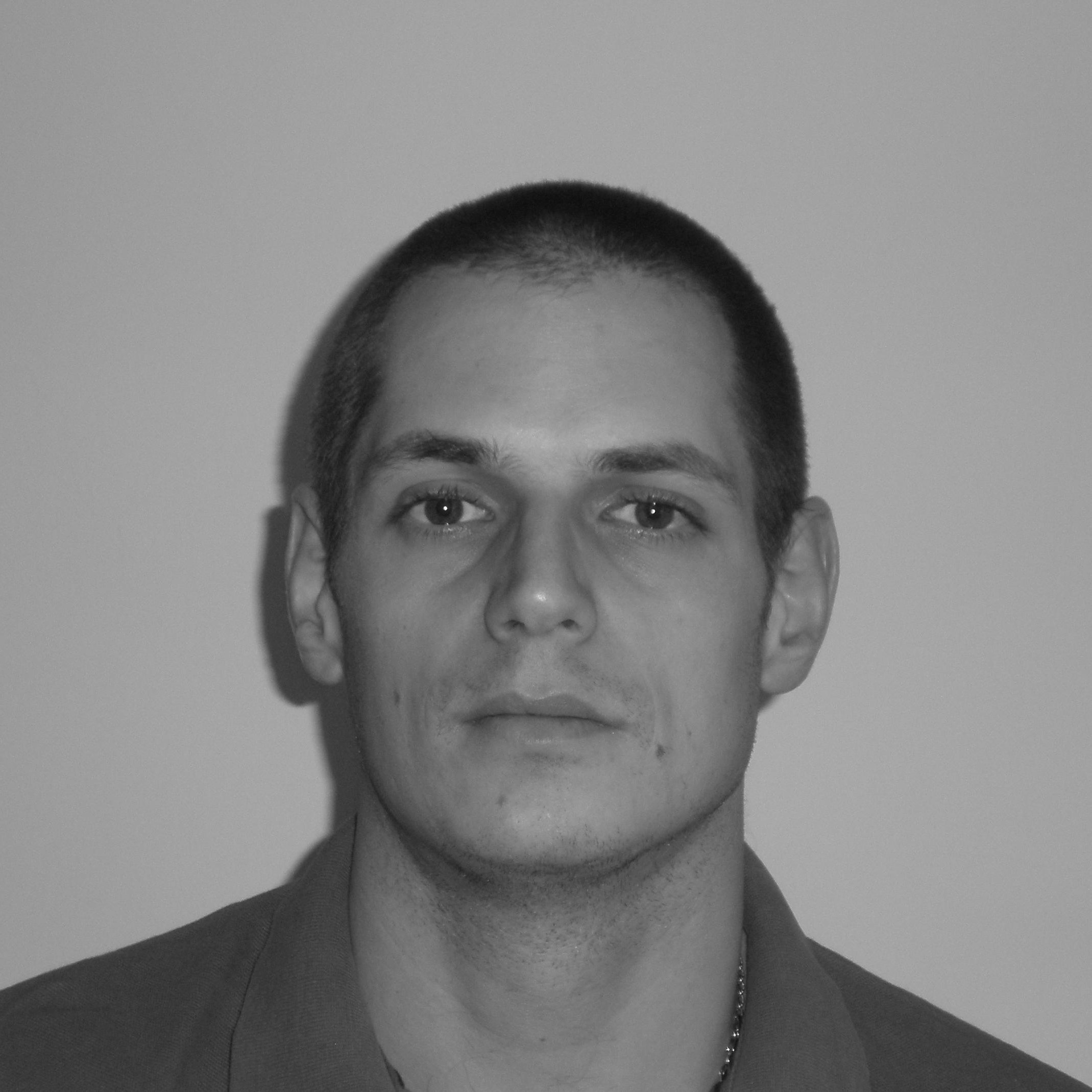
Michael is an associate professor at IG PAS - Institute of Geophyiscs Polish Academy of Sciences, Poland. His research is mostly focused on numerical modeling of riverine hydro-morpho-biodynamics, but he also worked on field and laboratory experiments of sediment transport. Michael is currently Editor-in-Chief of two journals, and, as a member of the Editorial Commission, helps in developing Geomorphica’s Editorial Board.
“I want to develop a society-driven journal, where authors feel comfortable in presenting and discussing their work"
Andrea Zerboni – he/him

Andrea is Professor of Geomorphology and Geoarchaeology at the Dipartimento di Scienze della Terra “A. Desio” of the University of Milano (Italy). As a geoarchaeologist and geomorphologist, he carried out research projects in Mediterranean and continental Europe, the Sahara Desert, East Africa, the Levant, the Arabian Peninsula, and Antarctica. His research aimed at reconstructing the effects of past climate changes on surface processes and the complexity and nonlinearity of the late Quaternary climate-environment-human nexus. he is also interested in detecting when human agency started leaving permanent changes on Earth’s processes as preserved in the geological record. In Geomorphica, Andrea supported the organisation of the journal and is willing to mentor the team thanks to his experience in the editorial process.
“I am delighted to support an international project for Open Science in the field of Geomorphology”
Former members
Victoria Fernandez – she/her

Victoria is a Postoctoral researcher at GFZ Potsdam. Her main research interests lie in understanding how different geological processes shape Earth’s surface by integrating geological information with modelling approaches that quantify surface process interactions with climate and tectonics. At Geomorphica, she will be supporting the journal in becoming more inclusive and accessible to all.
Lynsey MacLeary – she/her
Lynsey is a professional fluvial geomorphologist working in consultancy in Scotland. She has worked as a geoscientist across the mining and environmental sectors and completed her PhD at the University of Edinburgh, where she focused on the interplay between climate, vegetation, tectonics and erosion. In her current role, Lynsey works primarily in river and habitat restoration, natural flood management and rewilding and is particularly interested in Scottish gravel bed rivers. She has also worked in science communication roles, including academic publishing, specialist factual television production and earth science education. At Geomorphica, Lynsey is part of the Communications Commission.
“I want to help foster the fair and inclusive exchange of scientific knowledge so that everyone in our community can access it.”
Daniel Schillereff – he/him

Daniel has worked in the Department of Geography at King’s College London since 2015. He has a range of research interests around better understanding human impacts on environmental processes through integrating palaeoenvironmental data with monitoring and modelling of active systems. Daniel hopes, through his involvement with Geomorphica, to make a small contribution towards creating more positive working environments for everyone in research and higher education.
Guillaume Goodwin – he/him

Guillaume is a hydraulics and geomorphology scientist at FishPass, a small consultancy specialised in ecological continuity in rivers. His main interests are the evolution of fluvial and coastal wetlands, assessed through models and aerial topography. He also works on flood mitigation projects through wetland restoration. Guillaume has recently moved from academia to the private sector and aims to promote mutual transparency between research and its operational implementation. At Geomorphica he chairs the Web commission.
“Open science should be a two-way street, and I am excited to be part of a project that will broaden both reading and publishing horizons.”
Filippo Brandolini – he/him

Filippo is a research associate in geoarchaeology at the Centre for Landscape - Newcastle University (UK). His main research interests are landscape archaeology, geospatial analysis and computer modelling. He is specifically interested in studying the relationship between historic landscape conservation and soil loss and degradation over the long term. At Geomorphica, Filippo is part of the Web Commission.
Guido Stefano Mariani – he/him

Guido is a senior Researcher at the Department of Earth Science - University of Torino, Italy. His main research subjects are soil science, geoarchaeology, and Quaternary geology. He works on landscape evolution, valorization, and human-landscape interactions through field/lab studies of soils and sediments, and GIS modelling and remote sensing. At Geomorphica, Guido Stefano is part of the Web Commission.
“I want to nurture a change to a positive, supportive publishing culture based on the sharing of ideas and experiences”

 A publication of Penn State Libraries Open Publishing
A publication of Penn State Libraries Open Publishing
